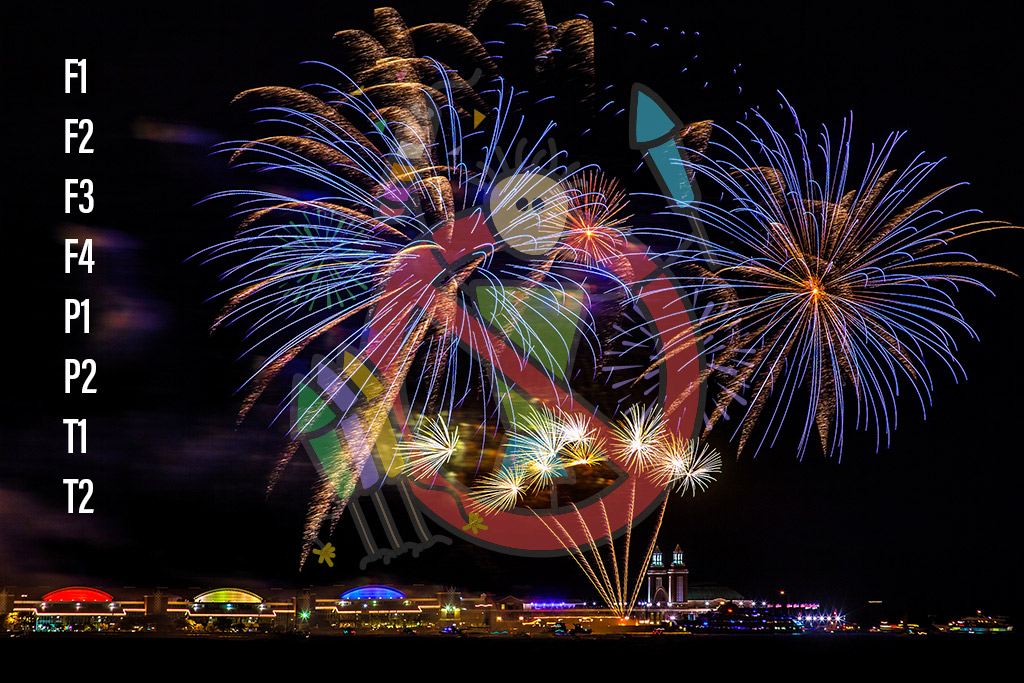Blog
Legal Fireworks: What It Means and How to Understand It

Anyone who has ever bought fireworks has asked the question: “Is this even legal?”
At first glance, it sounds simple — but the answer is not.
In general, any fireworks marked with a CE certification are legal for sale and use within the European Union.
However – and here comes the first big BUT – not every type of fireworks is meant for everyday users.
Fireworks are divided into several categories according to their power, purpose, and safety requirements.
That’s where the confusion begins, because labels like F1, F2, F3, F4, P1, P2, T1, and T2 often sound like mysterious codes.
So, what do they actually mean — and which ones can you legally buy?
🔹 Fireworks Categories (F1–F4)
F1 – Very Low Hazard
-
Designed for indoor use or near people.
-
Typical products: sparklers, small snaps, mini fountains.
-
Age limit: from 12 years (16 in some countries).
-
No license required.
F2 – Low Hazard
-
For outdoor use on small open areas.
-
Typical products: small cakes, roman candles, rockets, fountains.
-
Age limit: from 18 years.
-
No license required.
-
Legal throughout the EU with valid CE certification.
F3 – Medium Hazard
-
Requires greater safety distance and open space.
-
Typical products: larger cakes, semi-professional effects.
-
Age limit: from 21 years.
-
In some countries, professional competence is already required.
F4 – Professional Fireworks (For Certified Operators Only)
-
Intended exclusively for professional use.
-
Purchase and use require a certificate of competence, obtainable after 18 years of age and successful theoretical and practical exams at the Mining Authority (Czech context).
-
Not for consumer sale.
-
Used in large shows, concerts, and professional displays.
🔸 Other Fireworks Categories
P1 & P2 – Technical Fireworks
-
Used for special purposes (smoke devices, airbags, safety systems).
-
P1: available from 18 years, no license required.
-
P2: for certified professionals only.
T1 & T2 – Theatrical Pyrotechnics
-
Used in concerts, films, and stage productions.
-
T1: available from 18 years, no license required.
-
T2: restricted to certified professionals.
🌍 Different Rules Across Europe
The EU has unified the certification system (CE),
but each country still sets its own rules for sale and use.
For example:
-
Germany allows public sale of F1 and F2 only. F3 is treated as professional.
-
Austria and France have local regulations restricting F2 use in cities.
-
Italy often requires official notification even for smaller fireworks displays.
Being legal in one country doesn’t mean you can use it in another.
🧠 Summary
-
Every legal product must carry CE marking and a visible category label.
-
F1 & F2 are freely available across the EU (12 / 18+).
-
F3 & F4 require certification or professional competence.
-
P1, P2, T1, T2 are for technical or stage use with specific restrictions.
When in doubt, check the packaging, or ask a specialized retailer familiar with EU regulations.
💬 Conclusion
Legal fireworks don’t mean compromise.
Modern F2 fireworks can still offer a powerful, safe and fully legal experience (for now).
✍️ A View from Practice
Recent changes in fireworks legislation feel more like political theatre than real safety reform.
Putting F3 on the same level as F4 effectively punishes ordinary people who just want to celebrate responsibly.
Manufacturers will simply relabel products from F3 to F2 — so nothing truly changes.
Environmental arguments sound noble, but in reality, emissions rise for just a few hours a year.
And the “dog owners” debate? Let’s be honest — it’s about people, not pets.
Personally, I’m more annoyed when I step in dog poop three times a year than when I hear a few fireworks on New Year’s Eve.
It’s about consideration, not prohibition.
When I visited Chicago, I saw twice-weekly fireworks over Lake Michigan.
Thousands of people, beautiful atmosphere, no complaints, no chaos.
At 10 p.m., it’s quiet.
Why does it work there, but not here?
Of course — we’re in the European Union,
where everything is gradually being restricted — cars, heating, fireworks…
It seems to be part of a larger plan.